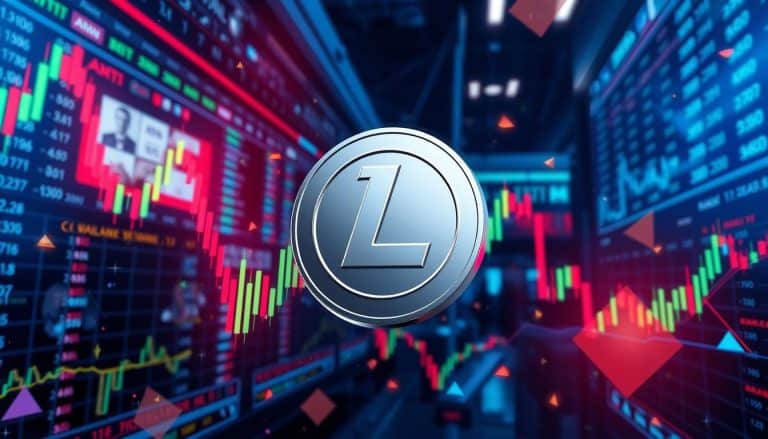The Dumbest Bitcoin Mining Myths: Debunking Common Misconceptions
Bitcoin mining has become a hot topic in the digital world, often surrounded by myths and misconceptions. It’s easy to get caught up in stories that might sway your understanding of its true nature.
One of the most enduring myths is that Bitcoin mining causes excessive environmental harm, but this isn’t entirely true. Many operations now use renewable energy sources, significantly lowering the carbon footprint.
Another common myth is the belief that Bitcoin mining is monopolized by a few large companies. While it’s true that certain players have dominated the field, many smaller miners contribute to the network as well. This means competition and decentralization still play a vital role in maintaining a balanced system.
Myths about instant wealth from Bitcoin mining also persist. Although some have profited greatly, mining is not a guaranteed path to riches. Costs for equipment and electricity vary widely, and understanding the risks and rewards is crucial before diving in.
Key Takeaways
- Bitcoin mining is more environmentally friendly than believed.
- Small miners still thrive, countering monopoly myths.
- Wealth from mining is not guaranteed; it’s a complex process.
Debunking the Energy Inefficiency Myth
Bitcoin mining often faces criticism for its energy use. Understanding the reality compared to traditional systems and the role of renewable energy can change this perspective.
Comparing Bitcoin Mining to Traditional Banking
When considering energy use, it’s crucial to compare Bitcoin mining with traditional banking systems.
Banking infrastructures, which include data centers, office buildings, and ATMs, consume vast amounts of electricity globally. This consumption is often overlooked when discussing energy efficiency.
Although Bitcoin mining uses a significant amount of energy, some argue it can offer decentralization and security. In a Harvard Business Review article, it’s noted that Bitcoin’s energy use can be likened to a small country. Banking, which serves millions daily, depends heavily on its physical infrastructure and digital systems, both of which require constant power.
Renewable Energy in Bitcoin Mining
A substantial shift toward renewable energy sources in Bitcoin mining is happening today. This move helps to reduce the environmental impact of mining operations.
The Bitcoin Mining Council, for instance, reports a growing preference for solar, wind, and hydropower.
Miners in regions rich in renewable resources are increasingly harnessing these energy sources. This shift not only makes Bitcoin greener but could also make mining more sustainable in the long term. According to LinkedIn, the use of renewables is gradually becoming a key factor for Bitcoin miners.
Understanding Bitcoin Mining Costs and Rewards
Bitcoin mining involves costs like electricity and hardware, but miners can earn rewards through newly minted bitcoins. It’s important to weigh these costs against potential returns to see if mining is profitable for you.
The Cost-Benefit Analysis of Bitcoin Mining
When considering bitcoin mining, understanding costs is crucial. Electricity is often the biggest expense, as mining requires a lot of power. The cost of electricity can greatly affect profitability. Countries with cheaper electricity usually see higher profits.
Next, think about hardware efficiency.
Advanced mining rigs work faster and more efficiently, but they are also more expensive. Keep an eye on the balance between performance and cost.
You also need to consider the current market value of bitcoin.
As of late 2025, bitcoin prices fluctuate, impacting rewards. If the price is high, potential earnings rise, but a price drop can mean losses.
Setting up involves additional costs like cooling systems and repairs, which must be planned. Knowing these details lets you better assess if mining fits your financial goals.
Investment in Mining Technology
Investing in mining technology is a key part of profitable bitcoin mining. Hardware choices can make or break your success.
ASIC miners are popular for Bitcoin mining due to their efficiency. While initial costs can be steep, these machines are usually more profitable than older models.
Consider future scalability. Technology evolves quickly in this field. New machines improve power usage and processing speed, so staying current is important.
You may also need to invest in software to track performance. Good software helps monitor your rigs’ efficiency, leading to smarter energy use and better returns. Make sure any investment aligns with your long-term mining goals and budget.
The Fallacy of Monopolized Bitcoin Mining
There’s a common belief that Bitcoin mining is controlled by a few big players, leaving no room for smaller miners. This section explores the decentralization in mining networks and compares small-scale operations with industrial ones, revealing the realities of this mining landscape.
Decentralization in Mining Networks
You might think Bitcoin mining is dominated by a handful of major players, but that’s not entirely true. Mining networks are designed to be decentralized. No single entity has complete control over the process.
Mining pools help a lot with this. Individual miners can join these pools to combine their computing power, increasing their chances of earning rewards. This shared power enables many smaller miners to stay competitive against bigger players.
The Bitcoin protocol itself encourages decentralization. It makes it possible for anyone with the right equipment to participate. While some large entities have more resources, the network structure prevents any single miner from having too much influence. This design helps maintain a balance and ensures a fair distribution of mining opportunities.
Small Scale vs. Industrial Mining Operations
In the world of Bitcoin mining, both small-scale and industrial operations play a vital role.
Small-scale mining involves individuals or groups with fewer resources, while industrial mining uses massive facilities with specialized equipment.
Small miners benefit from joining mining pools. It helps them pool resources and share rewards. You don’t need the most powerful setup to succeed, just smart strategy and efficient equipment.
Industrial miners, on the other hand, invest in extensive infrastructure. They have access to significant power sources and use specialized chips known as ASICs, making their operations highly efficient. Even though they can generate more Bitcoin, the decentralized nature of the network prevents them from complete control.
While large operations dominate in terms of scale, small miners still have a place and can find success by being strategic and resourceful.
The Misconception of Bitcoin’s Alleged Illegality
Bitcoin, including its mining, often faces misconceptions regarding its legal status. While many believe it operates in a legal gray area, regulations are in place worldwide, shaping its validity and use.
Legal Status of Bitcoin Mining Across the Globe
Understanding Bitcoin mining’s legality depends heavily on location.
In countries like the United States and Canada, Bitcoin mining is legal, and regulatory frameworks guide its operation. These countries see it as a legitimate tech venture.
In contrast, places like China have cracked down on Bitcoin mining due to concerns over energy consumption and financial risks.
Even with such restrictions, Bitcoin mining continues to operate legally in numerous other nations, each shaping its approach based on economic and energy policies.
Bitcoin’s legal status often aligns with local beliefs and objectives. Exploring each region’s unique stance on Bitcoin mining helps trace its evolving global position.
Regulation and Compliance
Compliance is key in the world of Bitcoin mining. Miners must adhere to financial and environmental regulations, especially in nations with complex legal structures.
The U.S., for instance, classifies Bitcoin as a commodity, subjecting miners to specific financial rules.
Most countries require Bitcoin miners to obtain licenses and follow taxes and financial reporting mandates. Ignoring these can lead to legal issues, making understanding compliance crucial.
Bitcoin mining’s legal nuances demonstrate that while mining itself isn’t illegal, ensuring adherence to regulations is vital for ongoing operations. Staying informed about your region’s requirements protects your Bitcoin mining activities from potential legal complications.
Examining the Myth of Instant Earnings
Mining Bitcoin isn’t a quick path to wealth. It involves significant work and planning. You must think about costs, like electricity and equipment, and how mining challenges keep changing.
The Realities of Mining Profits
Mining is often seen as a way to earn money fast, but this is far from true.
You’re likely to face high upfront costs for buying mining rigs and energy expenses. These can eat away at potential profits.
Current mining hardware needs constant upgrades. Old machines become less efficient, affecting profit. Economic factors like Bitcoin’s price also impact earnings, which are not guaranteed to be steady. You must manage expectations because returns vary over time.
It’s crucial to analyze ongoing tech improvements and energy costs. While some miners make profits, it’s not instant and requires careful financial planning.
Mining Difficulty and Rewards Adjustments
Mining involves solving complex problems to add blocks to the blockchain. The difficulty of these problems adjusts every two weeks. This feature is meant to keep block production consistent, but it affects your rewards.
When more miners join the network, problems become harder. This reduces your chance of earning a block reward. Conversely, if miners drop out, difficulty declines, possibly increasing rewards. However, increasing participation typically raises the difficulty.
Bitcoin rewards are also halved every four years. This event, known as “halving,” decreases the number of Bitcoins miners receive. It’s a key factor that impacts global mining productivity and financial strategies. You must consider both dynamic difficulty and reward structures.
The Fable of Bitcoin Mining and Network Speed
Many believe Bitcoin mining requires fast internet for quick transactions, but this isn’t entirely true. Understanding how Bitcoin transactions work helps clarify the actual needs related to speed and connectivity.
Factors Influencing Transaction Speed
Transaction speed isn’t solely dependent on internet speed. More critical factors include network congestion and transaction fees.
When many transactions are queued, the network experiences delays. Miners prioritize transactions with higher fees, making them faster.
Network congestion varies based on overall blockchain activity. During busy periods, even high-fee transactions slow down. The size of the block also limits how many transactions can be processed at once. Therefore, high-speed internet isn’t the main factor affecting transaction speeds; network activity and fees matter more.
The Role of Mining in Network Performance
Bitcoin mining involves solving complex mathematical problems to validate transactions and add them to the blockchain. This process requires computational power, not high-speed internet.
Miners use machines with powerful processors to efficiently work through these problems.
The average internet speed is generally sufficient for mining. Data sent between miners and the network is small, so fast connections don’t give a significant advantage. What matters more are the mining hardware’s efficiency and electricity costs.
Miners focus on optimizing their setups to handle many calculations at once. The internet connection mainly needs to maintain a steady link to the network. Stale or rejected shares happen when there’s a delay, but this isn’t common if the connection is stable.
Invalidating the Usability and Scalability Myths
Bitcoin faces common misconceptions about its usability and scalability. These myths often discourage people from adopting or investing in Bitcoin. This section breaks down the scalability solutions being developed and exposes myths about Bitcoin as a currency.
Current and Future Scalability Solutions
A key myth about Bitcoin is that it cannot handle more transactions. While Bitcoin has limits, developers are actively working on solutions.
Current options like the Lightning Network aim to speed up transactions and reduce fees. This network allows transactions to occur off-chain first, then update the main blockchain later.
Sidechains are another promising solution. They allow transactions to run parallel to the main blockchain, reducing congestion. Improvements like these are essential as Bitcoin’s popularity grows. Developers continue to innovate, aiming for higher transaction volumes without risking security.
The myth that Bitcoin cannot scale effectively is slowly being dismantled. With technology advances, more solutions are on the horizon.
Myths Around Bitcoin as a Currency
Many believe that Bitcoin isn’t practical for everyday use. Critics often cite its volatility as a problem, arguing that it’s unreliable for transactions.
While price swings occur, adoption continues to rise globally. Various retailers and services now accept Bitcoin, showcasing its real-world utility.
Bitcoin also faces myths about speed and cost. Critics claim it’s too slow and expensive compared to traditional banking. However, with strategies like the Lightning Network in play, costs and times are improving. While not perfect, Bitcoin’s usability is constantly evolving.
These growing solutions counter the narrative that Bitcoin can’t serve as a currency, highlighting its adaptability and potential in many sectors.
Myth Versus Reality: The Environmental Impact
Bitcoin mining brings concerns about its environmental footprint. While some argue it is damaging, others highlight its potential for driving renewable energy use.
Progressive Steps Towards Sustainability
The narrative around Bitcoin mining’s environmental harm often overlooks efforts to use renewable energy sources.
Many mining operations are beginning to harness power from wind, solar, and hydroelectric systems. This is important as it decreases reliance on fossil fuels.
There is also a growing push for energy efficiency in mining. Updates in mining hardware contribute to this by reducing power consumption.
Some regions known for their rich renewable energy resources are becoming attractive sites for miners.
By focusing on these strategies, mining can become more sustainable.
Environmental Impact Analysis
Claims about Bitcoin mining contributing heavily to carbon emissions need deeper examination. While it’s true that the process is energy-intensive, it’s crucial to consider the energy sources.
Mining operations often take place in locations that offer abundant renewable resources. This helps lessen negative environmental effects.
There are also comparisons between Bitcoin and traditional financial systems. Some analyses suggest that Bitcoin might already be greener than traditional finance, as discussed in the article on Bitcoin’s Real Impact.
Considering these factors can help form a balanced view of its true effect on the environment.
The Truth About the ‘Too Late to Start Mining’ Myth
Many believe it’s now too late to enter the Bitcoin mining industry, but there are still chances for success. This section explores current opportunities and the future of Bitcoin mining.
Opportunities in the Mining Market
Even though Bitcoin mining has grown more competitive, there are still opportunities for new entrants.
Technological advancements have made mining equipment more efficient and accessible. Many regions offer incentives for renewable energy use, which can reduce costs and environmental impact.
Scaling operations can also be advantageous. Small-scale miners can join mining pools to increase their chances of earning rewards.
Various myths about mining’s feasibility have been debunked, showing potential paths for profitability.
Keep learning and adapting to maximize your success.
The Future Landscape of Bitcoin Mining
The future of Bitcoin mining is evolving with technological and regulatory developments.
Advancements in hardware make mining more efficient, decreasing the cost per Bitcoin mined. The shift toward sustainable energy solutions addresses environmental concerns, opening new avenues for growth.
Regulations may change the landscape, impacting profitability and legal standings. Staying informed about global policy shifts can help you navigate potential challenges.
Bitcoin’s continued popularity means mining remains viable for those willing to adapt to new trends and technologies. Exploring these factors can help you decide if entering the mining market is right for you.
Dispelling the Complexity Myth of Bitcoin Mining
Bitcoin mining may seem complex, but it’s not as inaccessible as it appears. With the right guidance and understanding, even beginners can participate in mining.
Mining Accessibility for Beginners
Many people think that Bitcoin mining is only for tech experts. This isn’t true.
Several tools and platforms are available to help you start mining without needing deep technical knowledge. Mining pools allow you to join a group of miners to share resources and rewards. This makes it easier since you don’t need to set up and manage your mining hardware alone.
Online tutorials and forums provide step-by-step guidance. You can learn how to set up your mining hardware and choose the best software.
By joining communities, you can exchange tips with others to improve your experience. This helps you avoid common mistakes and learn from more experienced miners.
Starting small can be a smart strategy. You can invest in more affordable mining equipment and gradually scale up. By doing so, you can learn the process while minimizing upfront costs and risks.
Frequently Asked Questions
Bitcoin mining often raises questions about its environmental impact, profitability, and technical aspects. Addressing these concerns helps clarify the realities of mining.
Is Bitcoin mining extremely harmful to the environment?
Bitcoin mining uses electricity but accounts for only 0.1-0.2% of the world’s energy consumption. Efforts are being made to improve energy efficiency, and some argue it’s one of the cleanest industrial users.
Can anyone start mining Bitcoin with their personal computer?
Mining Bitcoin with a personal computer is not practical due to the intense computational power required. Professional miners use specialized hardware for efficient results.
Does mining Bitcoin guarantee profits?
Profits from Bitcoin mining depend on factors like energy costs and market conditions. There are no guarantees, and outcomes can vary widely.
What is the real computational purpose of Bitcoin mining?
Bitcoin mining verifies transactions and adds them to the blockchain. Miners solve complex mathematical problems to maintain the network’s integrity and security.
Is it true that Bitcoin mining is no longer profitable?
Profitability has changed due to increased competition and costs. While some miners continue to profit, others may find it challenging depending on their circumstances.
How do energy costs impact Bitcoin mining profitability?
Energy costs significantly affect profitability.
Miners in regions with low electricity costs have an advantage. Mining is energy-intensive and power bills are a major expense.







 Bitcoin
Bitcoin  Ethereum
Ethereum  Tether
Tether  XRP
XRP  USDC
USDC  TRON
TRON  Lido Staked Ether
Lido Staked Ether  Dogecoin
Dogecoin  Figure Heloc
Figure Heloc  Cardano
Cardano  WhiteBIT Coin
WhiteBIT Coin  Wrapped stETH
Wrapped stETH  Bitcoin Cash
Bitcoin Cash  Wrapped Bitcoin
Wrapped Bitcoin  USDS
USDS  Wrapped eETH
Wrapped eETH  Binance Bridged USDT (BNB Smart Chain)
Binance Bridged USDT (BNB Smart Chain)  Chainlink
Chainlink  Monero
Monero  WETH
WETH  LEO Token
LEO Token  Zcash
Zcash  Stellar
Stellar  Hyperliquid
Hyperliquid  Coinbase Wrapped BTC
Coinbase Wrapped BTC  Ethena USDe
Ethena USDe  Litecoin
Litecoin  Sui
Sui  Avalanche
Avalanche  Hedera
Hedera  sUSDS
sUSDS  USDT0
USDT0  Shiba Inu
Shiba Inu  Dai
Dai  Uniswap
Uniswap  PayPal USD
PayPal USD  Mantle
Mantle  Cronos
Cronos  World Liberty Financial
World Liberty Financial  Toncoin
Toncoin  Ethena Staked USDe
Ethena Staked USDe  Canton
Canton  Polkadot
Polkadot  USD1
USD1  Rain
Rain  MemeCore
MemeCore  Aave
Aave  Bitget Token
Bitget Token